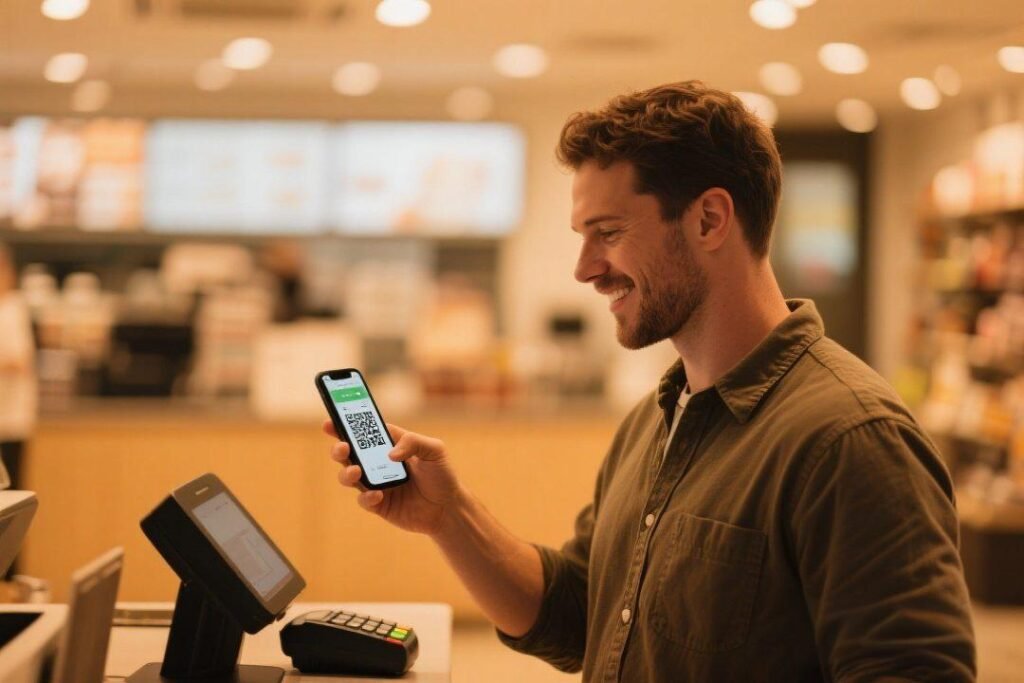As China fully enters a cashless society, Alipay and WeChat payments cover almost all consumption scenarios. However, there are still challenges for foreign tourists to adapt to this payment environment. This article combines the latest policies with practical tips to provide a detailed guide for US travellers to help you easily cope with payment restrictions and travel around China.

1. Understanding China’s Payment Ecosystem
More than 90% of daily transactions in China are done through mobile payments, with Alipay and WeChat dominating. While cash may still be accepted in remote areas or at small merchants, it is not convenient to carry too much cash. It is recommended to prioritise the use of mobile payments and to have a small amount of RMB cash (approximately 500 RMB or less) as a backup.
Updated Policy (2023-2025):
- Foreign Card Binding Function: Alipay and WeChat Pay already support binding of international credit cards such as Visa and Mastercard, covering scenarios such as dining, transport and shopping.
- Digital RMB Pilot: Overseas tourists can bind foreign cards through the Digital RMB APP to enjoy a network-free, real-time payment experience, and hard wallet card redemption services are also available at places such as Shenzhen Luohu Port.
- Transaction Limit: WeChat Pay has a maximum of RMB 6,000 for a single payment and an annual cumulative total of RMB 60,000; a 3% handling fee is charged for the portion exceeding RMB 200.
2. Alipay/WeChat Payment Binding Steps
Alipay (Alipay)
- Download and register: Download Alipay International from the app shop and register with your email address or overseas mobile phone number.
- Real Name Authentication: Upload your passport or Taiwan Compatriot’s Certificate (for Taiwan users) and other document information, and fill in the entry stamp page (for passport users only).
- Bind Foreign Card: Go to ‘My’ > ‘Bank Card’ > ‘Bind Now’ and enter your Visa/Mastercard number to complete the process.
WeChat Pay.
- Open Wallet: Click ‘Me’ > ‘Services’ > ‘Wallet’ in WeChat and fill in your passport information as prompted. 2.
- Add a foreign card: Select ‘Add a bank card’, enter your international credit card information and pass the verification.
- Switch wallet region: If you want to use Hong Kong Dollar wallet (WeChat Pay HK), you can switch the region to Hong Kong in ‘Wallet Settings’.
Note: Some users may not be able to bind their cards due to delayed SMS or failed verification, we recommend seeking assistance at the airport service counter or hotel.
3. Payment Tips for Common Scenarios
Transportation
- Metro/Bus: Activate the ‘Transport Code’ in Alipay or WeChat and directly scan the code to enter or exit the station.
- Taxi: Ask the driver to show the code to avoid refusing to accept cash when the driver has no change.
Dining & Shopping.
- Sweeping code to order food: Scan the QR code on the dining table to place and pay for the order on your own, without the need to communicate with the waiter.
- Cash Backup: Night market stalls or small remote shops may only accept cash, so it is recommended to bring small notes (e.g. 10 yuan, 20 yuan).
Tickets to attractions
- Online Purchase: Purchase tickets through Alipay/WeChat apps (e.g. ‘Ctrip’), some attractions require uploading passport information.
- On-site payment: Large attractions (e.g. Shanghai Disneyland) usually support the purchase of tickets by credit card.
4. Practical options to cope with the payment restrictions
Programme 1: Open a digital RMB wallet
- Steps: Download the ‘Digital RMB (Pilot Version)’ APP, top up with your foreign card and then you can scan the code to pay without the need of internet.
- Advantage: No handling fee, supports offline payment, suitable for areas with poor network signal.
Option 2: Buy a local SIM card
- Place of application: Airport or China Mobile/Unicom business hall, passport required.
- Function: Stable network is a prerequisite for code-sweeping payment, and it is also convenient for receiving SMS verification code.
Option 3: Use of international e-wallets
Some overseas wallets (e.g. Kakao Pay, TrueMoney) can be used to pay directly at Chinese merchants without downloading a local APP.
5. Pre-trip Essentials Checklist
- Bind payment tools: Download Alipay/WeChat in advance and complete foreign card binding.
- Cash exchange: Prepare small amount of RMB within 500 Yuan for emergency scenarios.
- Download map application: Baidu map (Chinese) or Gaode map (English), instead of Google map.
- Purchase a SIM card: Ensure that the network is smooth, or open international roaming with your carrier.
- Familiarise yourself with digital RMB: Register and top up in advance to cope with complex payment environments.
Summary
The convenience of China’s cashless society is unrivalled, but foreign visitors need to plan their payment methods in advance. By binding an international credit card, opening a digital RMB wallet, and carrying a small amount of cash, you can easily handle most scenarios. If you run into problems, feel free to ask merchants, hotels or bank staff for help – the Chinese enthusiasm for ‘scanning QR codes’ may make your payment experience a little more interesting.
For more China Travel Guide content, please visit our website.


















